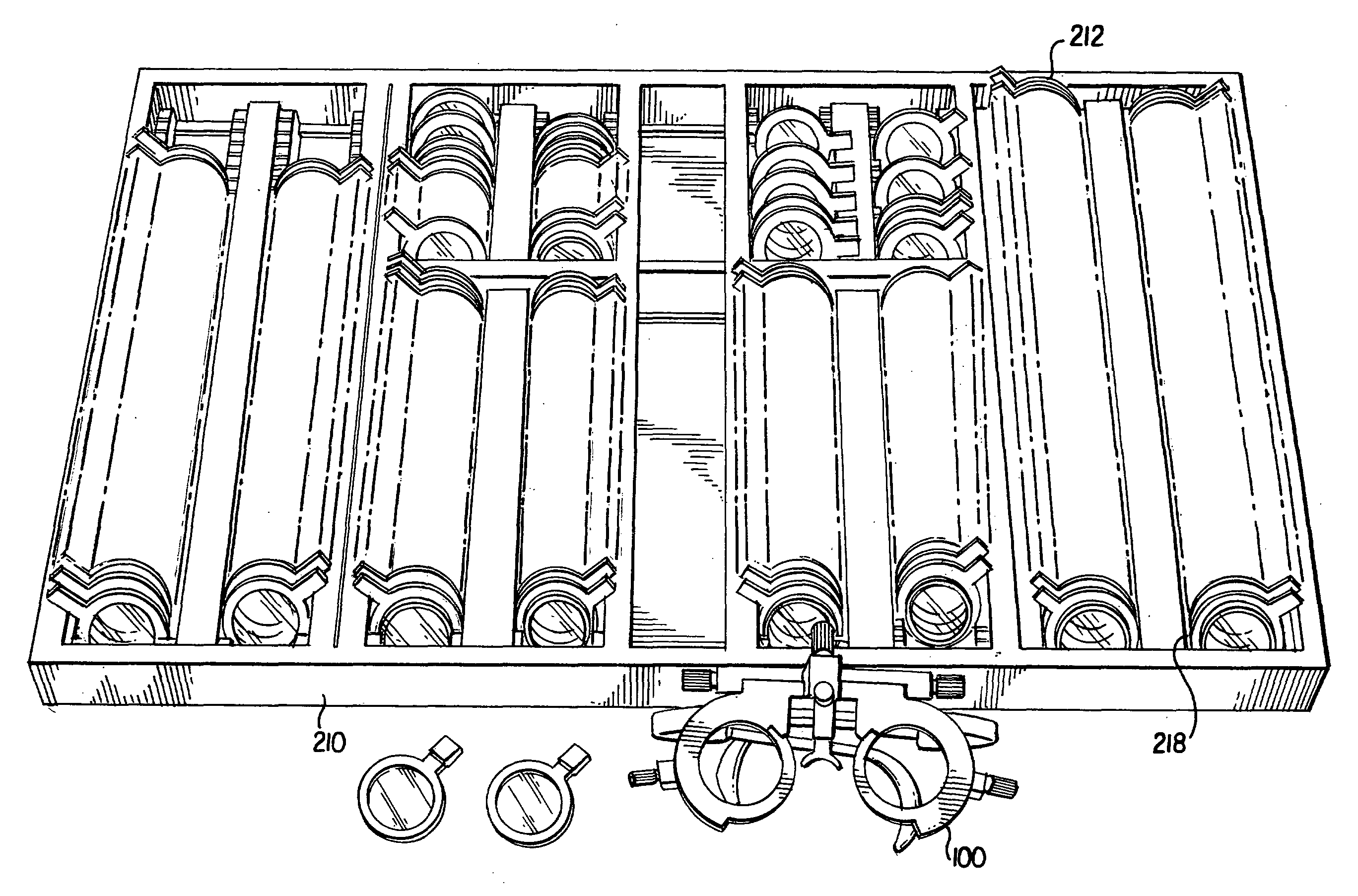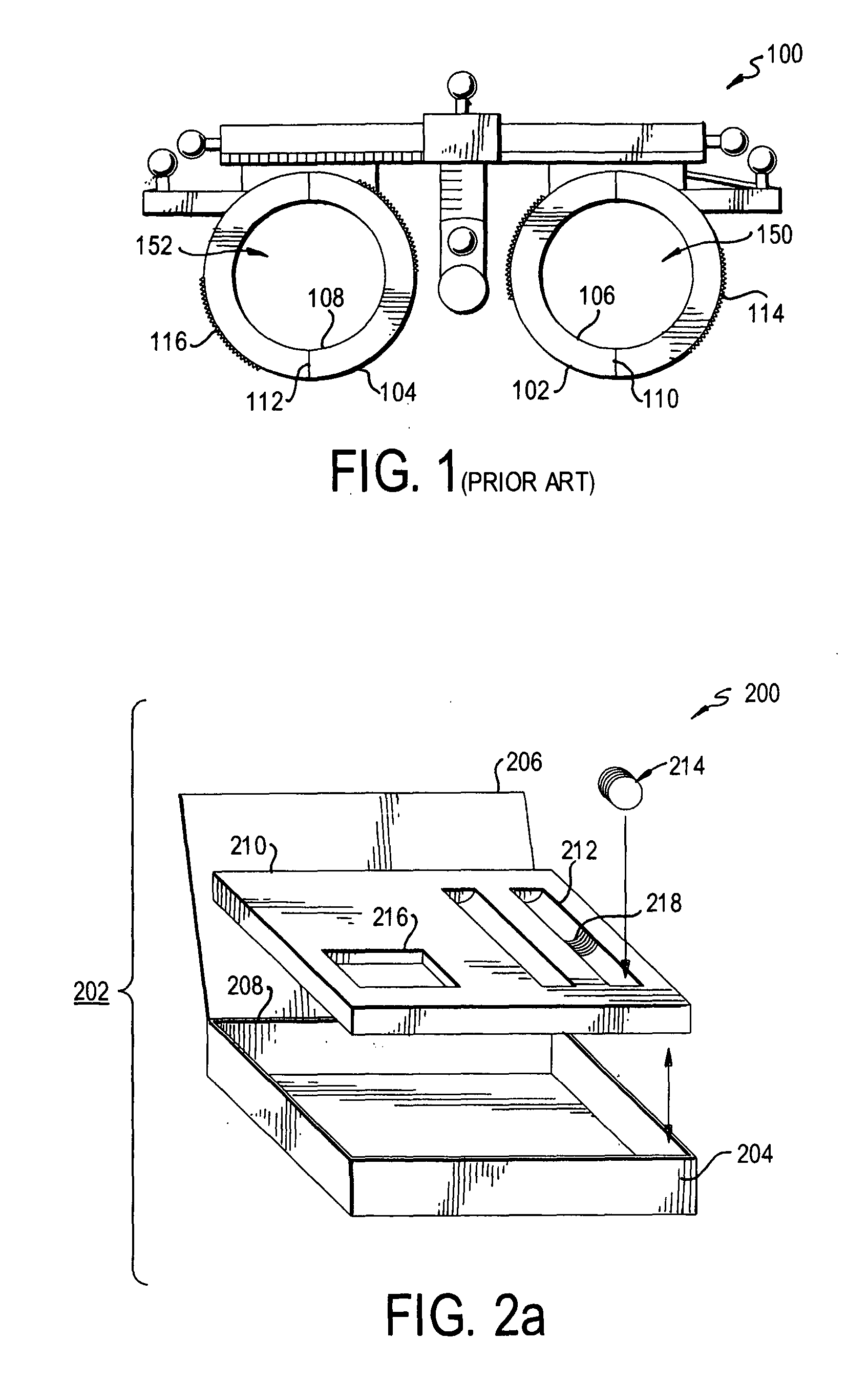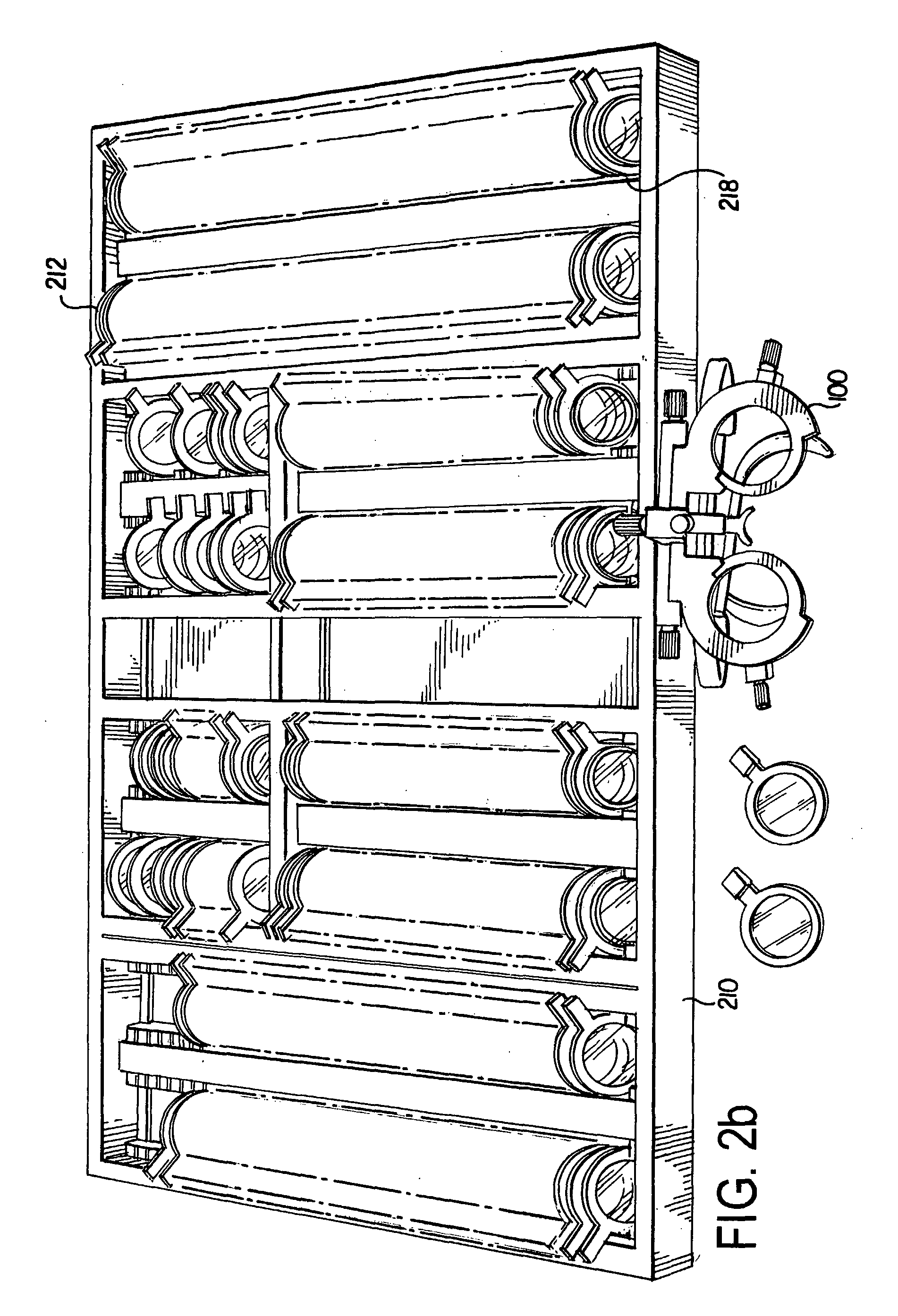Apparatus And Method For Simulating Vision Correction
a technology of simulating vision and glasses, applied in the field of systems and methods for simulating vision correction, can solve the problems of inability to correct current-manufactured glasses or contact lenses, and higher-order aberrations are refractive errors in the living ey
- Summary
- Abstract
- Description
- Claims
- Application Information
AI Technical Summary
Benefits of technology
Problems solved by technology
Method used
Image
Examples
Embodiment Construction
[0041]Several preferred embodiments of the invention are described for illustrative purposes, it being understood that the invention may be embodied in other forms not specifically shown in the drawings.
[0042]Tuning first to FIG. 1, shown therein is a perspective view of a prior art trial lens spectacle-type frame 100. A trial lens frame, also known as a simple phoropter, is used to hold trial lenses proximate a living eye so a doctor can simulate a patient's corrected vision in a clinical setting, such as at a doctors office. Often, patients suffering from myopia (nearsightedness, short-sightedness), hypermetropia (farsightedness, long-sightedness), astigmatism, or higher order aberrations may not fully appreciate his or her corrected vision by simply sitting behind a suspended phoropter and looking at the letters and numbers on an spot-lit acuity chart. By wearing the trial frame 100, the patient can walk around the office or outside, read a book, look at distant and near objects,...
PUM
 Login to View More
Login to View More Abstract
Description
Claims
Application Information
 Login to View More
Login to View More - R&D
- Intellectual Property
- Life Sciences
- Materials
- Tech Scout
- Unparalleled Data Quality
- Higher Quality Content
- 60% Fewer Hallucinations
Browse by: Latest US Patents, China's latest patents, Technical Efficacy Thesaurus, Application Domain, Technology Topic, Popular Technical Reports.
© 2025 PatSnap. All rights reserved.Legal|Privacy policy|Modern Slavery Act Transparency Statement|Sitemap|About US| Contact US: help@patsnap.com



